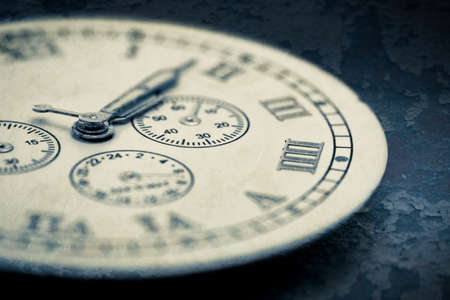Introduction to British Folklore and Aura Concepts
Britain’s rich tapestry of folklore is woven from centuries of myth, legend, and local tradition. When delving into the realm of aura protection, it’s essential to first understand how these ideas intersect with the nation’s cultural identity. The concept of an ‘aura’—an invisible energy field said to surround living beings—may feel modern or even mystical to some, but it resonates deeply with historical beliefs found throughout the UK. From the misty highlands of Scotland to the ancient hedgerows of rural England, stories have long circulated about unseen forces influencing health, fortune, and personal safety. While auras as we know them today are often discussed in contemporary wellness circles, their roots can be traced back to much older traditions where spiritual boundaries were fiercely guarded. This section explores the origins of British folklore and sheds light on how the notion of a protective aura has been understood within the UK’s historical context.
2. Warding Off the Unseen: Historic British Protective Symbols and Charms
The British Isles are steeped in centuries-old beliefs that unseen forces can influence our lives, both for better and worse. This cultural undercurrent gave rise to a fascinating array of protective symbols and charms, ingeniously woven into daily existence. Central to these practices are hexfoils, witch marks, and the ever-iconic horseshoe—each believed to shield individuals and households from harm.
Hexfoils, also known as “daisy wheels,” are intricate circular patterns carved into timber beams, doorways, or even stone hearths. Their looping lines, which never break, were thought to confuse malevolent spirits who might attempt to enter a home. This symbol’s power lies in its endlessness—a visual maze trapping negative energy on the threshold.
Equally intriguing are witch marks, sometimes referred to as apotropaic marks. These symbols—often simple interlocking Vs or other geometric motifs—were inscribed in hidden corners of old cottages, barns, and churches across Britain. Their function was straightforward yet profound: to divert curses, ward off witches, and prevent evil from taking root within the walls.
The humble horseshoe remains perhaps the most recognisable of all British protective charms. Traditionally nailed above doorways with the open end facing upwards (to catch good luck), the horseshoe’s iron composition was believed to repel mischievous fae folk and ill-intentioned spirits alike. The ritual of finding, gifting, or positioning a horseshoe is still observed in many rural communities today.
| Symbol/Charm | Traditional Placement | Believed Protective Power |
|---|---|---|
| Hexfoil (Daisy Wheel) | Doorways, Beams, Hearths | Confuses & traps evil spirits |
| Witch Mark (Apotropaic Mark) | Corners, Chimneys, Barns | Diversion of curses & protection from witches |
| Horseshoe | Above Doorways (ends up) | Repels bad luck & attracts good fortune |
These folk traditions aren’t just relics of a bygone era; they reflect an enduring human desire to create boundaries between ourselves and unseen dangers. Many contemporary Britons still incorporate these symbols into their homes—not only as heritage décor but as quiet nods to age-old techniques for aura protection.

Nature’s Guardians: Sacred Plants, Herbs, and Trees
In the heart of British folklore, nature itself is revered as a powerful ally in aura protection. Generations have turned to the native flora—especially the rowan and elder trees—for their mystical properties and spiritual significance. These plants are not merely decorative features of the countryside; they are woven into the fabric of protective customs that safeguard individuals and homes from unseen forces.
The Rowan Tree: A Sentinel Against Evil
Known locally as “the witch tree,” the rowan has long been regarded as a natural guardian. Its scarlet berries, marked with a tiny pentagram, were believed to ward off malevolent spirits. In historic practice, sprigs of rowan would be hung above doorways or worn as amulets to create invisible barriers against negativity. Even today, some rural communities keep a piece of rowan near entryways, upholding the age-old belief in its aura-shielding power.
Elder Magic: Cleansing and Blessing
The elder tree holds an equally venerated place in British lore. Associated with transformation and healing, elder branches were crafted into protective charms or fashioned into wands by cunning folk—Britain’s traditional wise women and men. The fragrant blossoms found use in cleansing rituals: their smoke was thought to purify spaces and refresh personal energy fields. Folk wisdom cautioned never to cut elder without first asking permission of the Elder Mother spirit, highlighting a profound respect for nature’s sentience.
Other Native Allies: Hawthorn, Heather, and Beyond
Beyond rowan and elder, hawthorn hedges marked boundaries both physical and spiritual, while heather was gathered for luck and gentle protection. Herbs such as mugwort and vervain were burned or bundled for smudging ceremonies—simple yet potent ways to dispel unwanted energies lingering in one’s aura. These traditions demonstrate an intuitive understanding of ecology and energetics: by aligning with nature’s guardians, our ancestors cultivated both environmental stewardship and spiritual resilience.
Today, these plant-based practices invite us to reconnect with our landscape and its rich legacy. Whether one chooses to weave a rowan charm or simply sit beneath an ancient elder tree, tapping into Britain’s botanical folklore remains a meaningful path to nurturing personal boundaries and restoring energetic harmony.
4. Folk Wisdom and the Power of Words
Throughout British history, the spoken word has been revered as a potent tool for protection and spiritual safeguarding. In many rural communities and tight-knit villages, incantations, blessings, and charms were passed down through generations as vital components of everyday life. These verbal rituals were more than mere superstition; they represented a collective belief in the transformative power of language to shield one’s aura from harm.
The Role of Incantations in Everyday Life
Incantations—spoken or whispered phrases—were often used at dawn or dusk, believed to be times when one was most vulnerable to negative forces. For example, shepherds in the Lake District might recite short protective rhymes before setting out with their flocks, invoking local saints or nature spirits for safety. Likewise, mothers would mutter blessings over their children’s heads before bed, weaving words of hope and protection into the very fabric of nightly routines.
Blessings and Charms: Spoken Shields
Blessings in British folklore ranged from formal church-sanctioned prayers to informal household utterances. Many homes kept a repertoire of such blessings for key occasions—moving house, embarking on journeys, or even during illnesses. The power lay not just in the words themselves but in their repetition and communal reinforcement. Spoken charms often incorporated local dialects and references to landmarks or ancestors, rooting them firmly in place and tradition.
Common Protective Sayings Across Regions
| Region | Typical Incantation/Charm | Purpose |
|---|---|---|
| Cornwall | “By Tre, Pol and Pen, no evil shall enter in.” | Home protection |
| Yorkshire | “Angels guard thee this night; keep thee safe until morning light.” | Nighttime blessing |
| Scotland Highlands | “Sith is mise fo sgàil Dhè.” (For I am under God’s shadow.) | Aura shielding from ill-wishing |
| Wales | “Duw a’th waredo di.” (God deliver you.) | General protection against misfortune |
The Social Aspect: Community as Guardian
The communal nature of these spoken protections is significant. They were rarely performed alone; rather, neighbours might join in a chorus of blessings during major life events or hardships. This collective participation reinforced not only individual auras but also the social bonds that constituted an invisible shield around the whole community—a living testament to the enduring legacy of British folk wisdom.
5. Rituals and Ceremonies: Seasonal and Local Practices
Throughout British history, the annual rhythm of rural life was punctuated by rituals and ceremonies designed to fortify both personal and collective auras against misfortune and malign influence. From the windswept Highlands to the cobbled lanes of English market towns, communities leaned into tradition as a shield, drawing upon centuries-old customs that interwove spiritual protection with everyday social fabric.
Fire Festivals: Harnessing Elemental Power
Among the most spectacular examples are fire festivals such as Beltane in Scotland and May Day in England. Lighting bonfires on hilltops or village greens wasn’t mere revelry—it was believed the flames purified spaces, warded off evil spirits, and revitalised the auric field of those who danced around them. Leaping through smoke or carrying embers home became acts of communal cleansing, ensuring that both the land and its people entered the new season under an aegis of protection.
Town Customs: Parades, Processions, and Symbolic Acts
Many towns developed unique ceremonies rooted in local legend. The ancient ‘Obby ‘Oss festival in Padstow or the peculiar Whittlesea Straw Bear procession are just two examples where symbolic figures—often masked or draped—moved through the streets to gather negative energies and sweep them away. Participation was more than pageantry; it was a collective reaffirmation of boundaries between safe community space and outside chaos.
Annual Rituals: Household and Personal Safeguards
On a more intimate scale, households observed yearly rites such as hanging rowan crosses above doorways during Samhain or weaving Corn Dollies at harvest time. These handmade charms were thought to absorb ill will or psychic attack, their placement at thresholds reinforcing the aura of those within. Even simple acts like sweeping hearths sunwise or blessing wells with ribbons had deep roots in maintaining energetic equilibrium.
Community Cohesion Through Shared Magic
The true potency of these seasonal practices lay not only in their ritual symbolism but also in their ability to draw communities together. Shared intention—whether sung in unison during wassailing or enacted in silent procession—amplified individual protections into something greater than the sum of its parts. In essence, British folklore teaches us that safeguarding one’s aura is as much a social endeavour as a personal one, woven seamlessly into the annual cycle of town and countryside alike.
6. Modern Resonance: British Folklore Techniques in Contemporary Practices
While much of Britain’s rich folklore might seem to belong to a distant past, many traditional techniques for aura protection have found renewed relevance in modern life. Today, practitioners and enthusiasts alike are rediscovering the wisdom of their ancestors, integrating age-old customs into holistic wellness routines and everyday living. Whether it’s the use of protective herbs like rowan and elderberry in homemade infusions, or the resurgence of interest in crystal lore rooted in Celtic traditions, these practices are now embraced not only for their mystical allure but also for their contributions to mindfulness and well-being.
Across contemporary Britain, you’ll find spiritual practitioners weaving these historic methods into everything from meditation workshops to yoga sessions. For example, the ringing of handbells—a practice once used to dispel negative energies during folk rituals—now features in sound healing therapies designed to harmonise the body’s energy field. Similarly, salt cleanses and charm bags are incorporated into personal rituals aimed at fostering resilience against daily stressors. This blend of old and new allows individuals to connect with their heritage while nurturing holistic health.
Importantly, this cultural continuity is not confined to niche communities. Increasingly, British schools, wellness centres, and even local councils recognise the value of integrating folklore-inspired activities—such as guided woodland walks echoing ancient pilgrimage routes or group storytelling sessions centred on mythical guardians—to foster communal bonds and mental well-being. These modern adaptations highlight how folklore remains a living tradition, offering both protection and a sense of belonging in an ever-changing world.
Ultimately, the enduring appeal of British aura protection techniques lies in their adaptability. By evolving alongside society’s needs, they continue to provide comfort, empowerment, and cultural identity. In embracing these age-old practices within contemporary settings, Britons affirm that the past is not merely preserved but actively lived—infusing daily life with meaning and resilience drawn from centuries-old wisdom.


